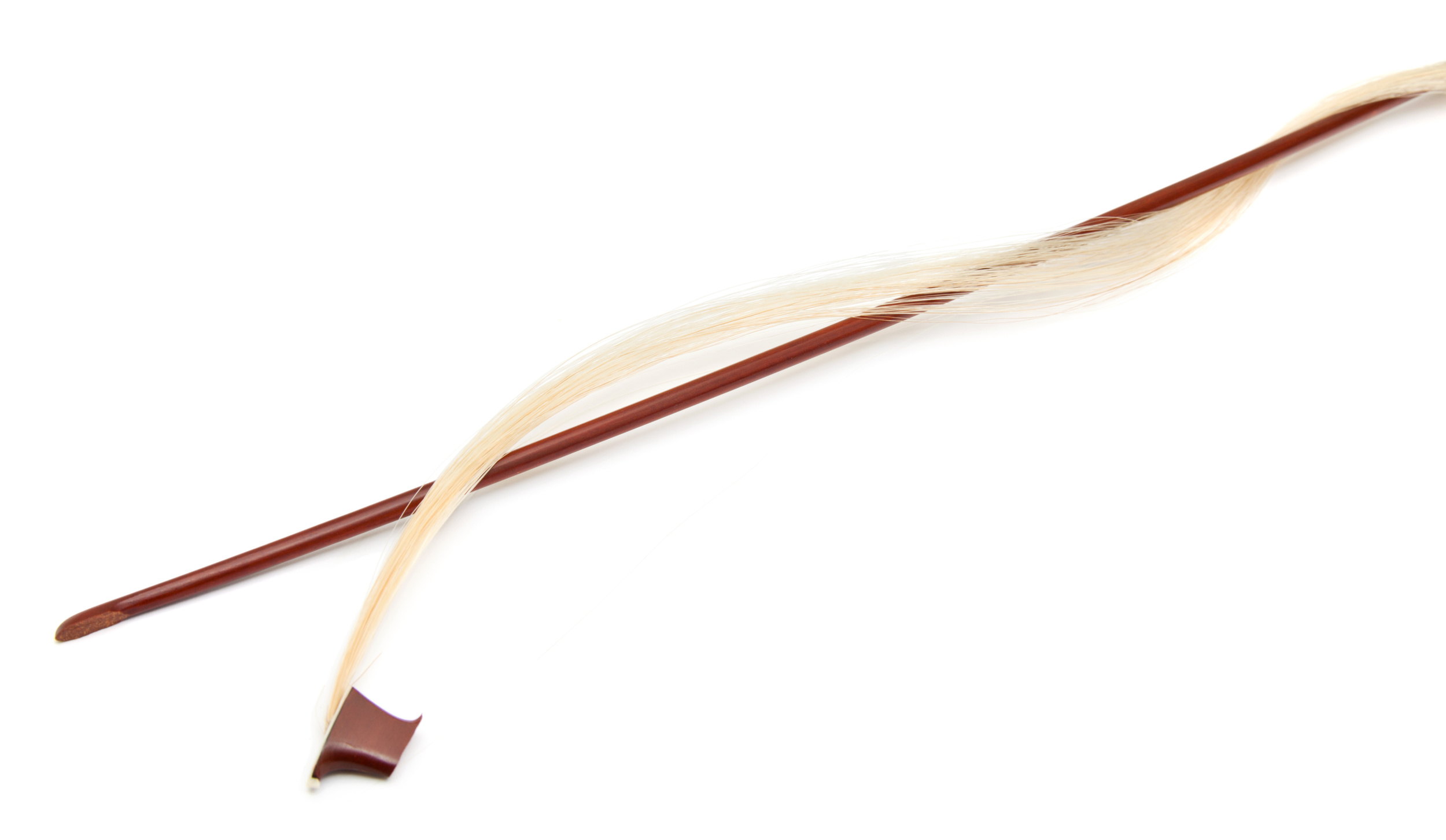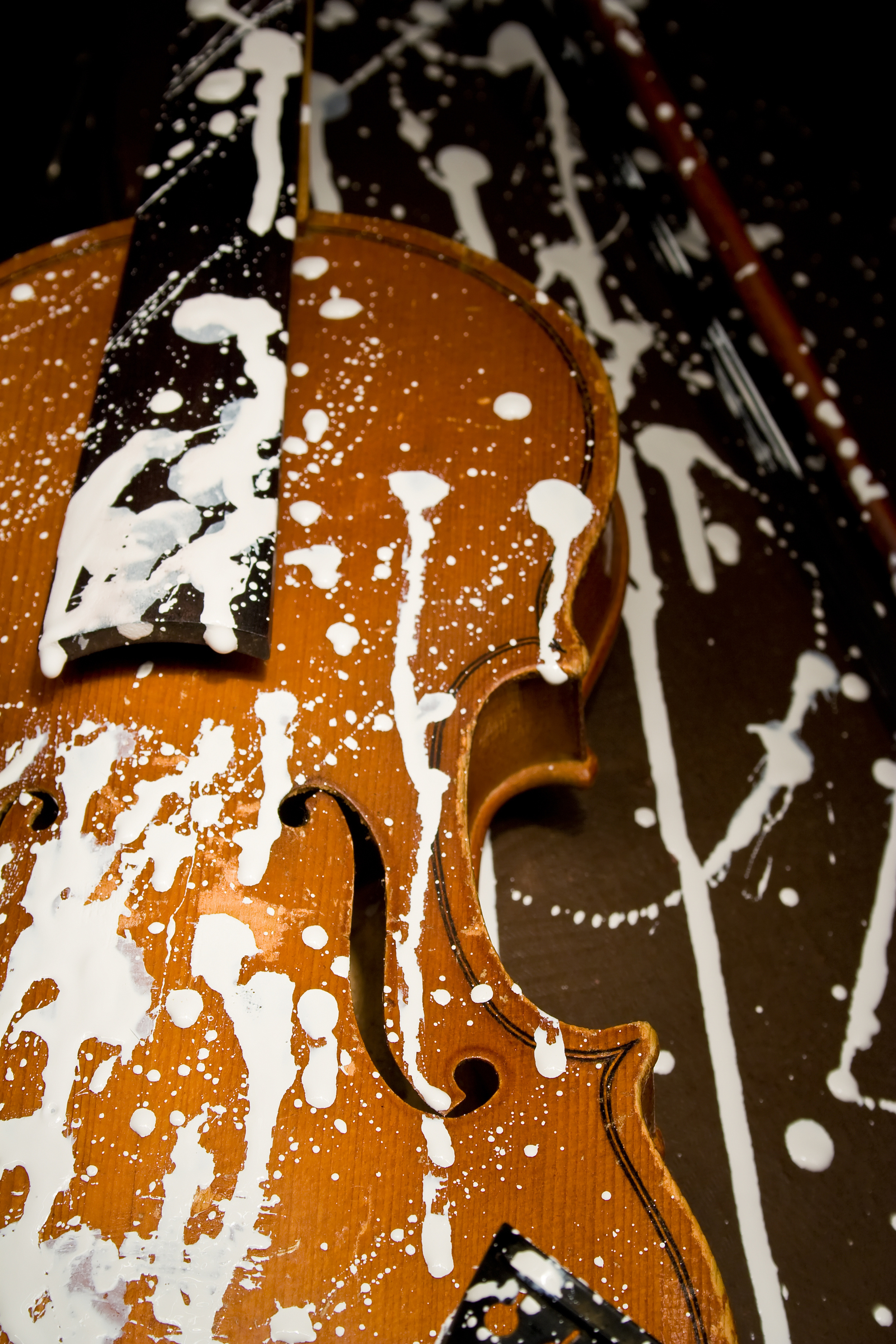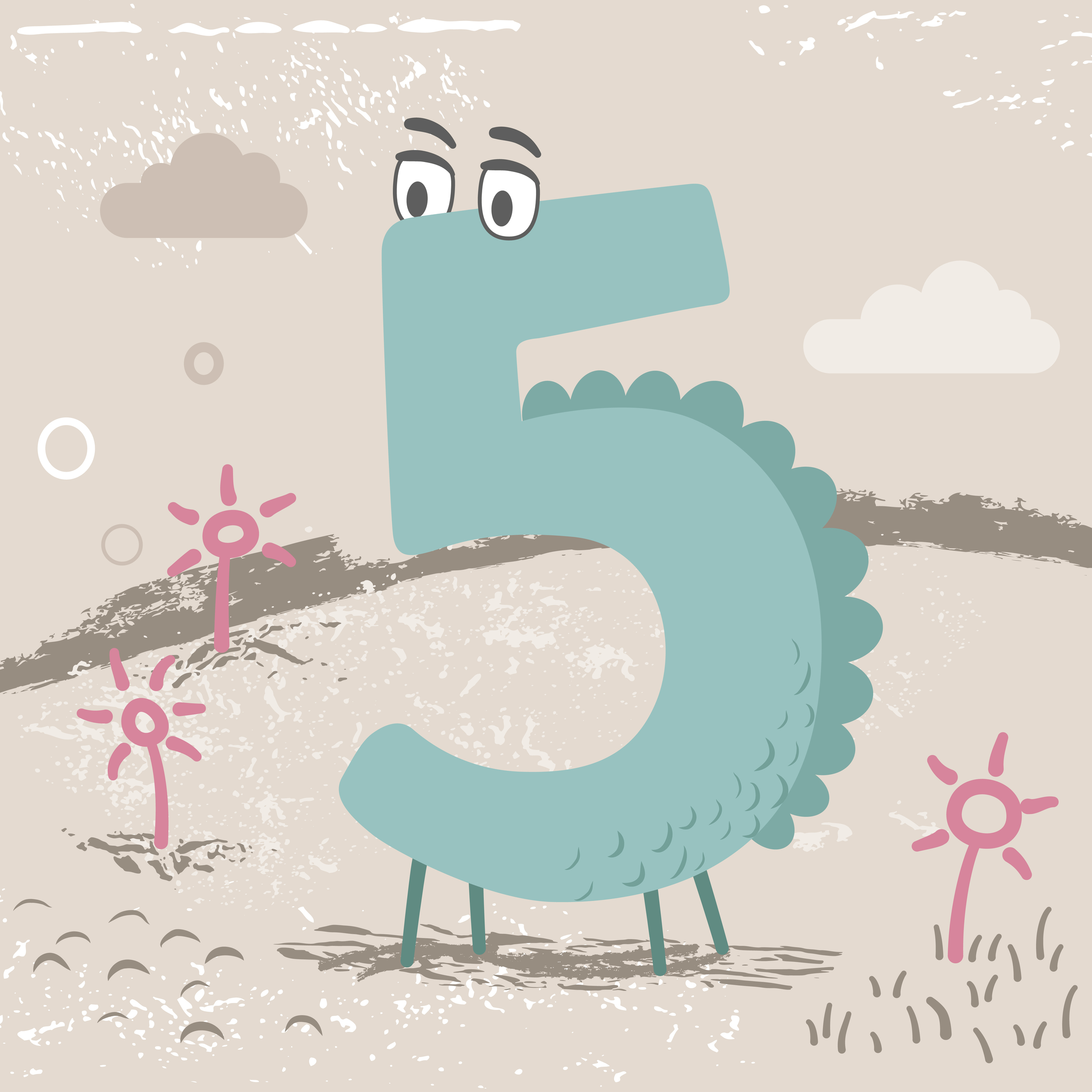Violin Bow Care
Keep your bow happy and healthy with these simple strategies.
Proper violin bow care and routine maintenance is essential. Read these answers to frequently asked questions on violin bow care. Keep your bow fit as a fiddle and playing beautifully for years to come!
How tight and how loose should I make my bow hairs?
The hair on the bow should be tightened when you play, and loosened when you are done and before you put the violin away.
Do not over-tighten the hair. Around 1/4 of an inch distance from hair to the closest part of bow stick is perfect. But this can vary depending on the player and the responsiveness, and stiffness of the bow itself.
When you are finished playing, loosen the hair on the bow enough that there is no tension and the hair is resting on the curved middle section of the stick. Do not loosen the hair too much. Super loose hair could easily catch and break on your violin case. Turning the end pin on the bow a few times will help to loosen the tension and keep the bow in better condition.
How often should I rehair my violin bow?
This is the most common type of bow 'repair' although it's importance is often overlooked. Bows should be rehaired once a year. Bow hairs fall out while practicing. This can cause one side of the bow to have more hair then the other. When this happens the bow will be pulled to one side, and over time the stick will become bent instead of straightly alligned. Bow hairs can also develop rosin build up making it difficult for the hair to 'grab' the string properly.
Prices will run typically run between $40.00 and $120.00 depending on type of hair you use.
How often should I apply rosin to my violin bow hair?
A. That depends on how often you play. As you play the violin and become more familiar with the needs of your bow, you will get a better feel for when it needs rosin. For beginners, the bow should be rosined about once a week. For advanced and professional violinists that are practicing 2-5 hours a day, rosin the bow daily. Avoid too much rosin.
Too much rosin will create a rosin smoke cloud that can be distracting to both the performer and the audience during a concert. An excess amount of rosin will also put a thick layer of rosin dust on the instrument.
Should cleaning be part of my routine violin bow care?
Bows should be cleaned regularly, but care should be taken to not damage the hair in the process. Although some oils and polishes are said to be safe on bows, it is better to not risk damaging the bow and use a safe Polishing Cloth for Musical Instruments instead. Wipe the rosin residue off of the wood regularly to avoid build up. There will be some brown spots and rosin buildup that happens overtime on the hair of the bow. Do not try to clean this off, it is simply a sign that your hairs need to be replaced.
Do NOT touch the bow hair with your fingers. This will put unneeded oil residue and dirt on it.
What are the most common types of violin bow breaks and how can I avoid them?
Tapping the bow against a music stand, using the tip to point to objects, or dropping it on the floor are the most common causes of injury to a bow. Never allow a violin bow to be used in the sport of fencing. And of course always keep your bow in a nice safe case for the ultimate protection. Plenty of bows left on the floor in orchestra have been stepped on and snapped before.
Do changes in the weather, or humidity affect my bow?
Most people are aware the changes in the climate will affect their violin, but few are cognizant to the fact that the same holds true for your violin bow. Hair stretches in the summer and shrinks in the winter. So, protect your bow by avoiding extremes in temperature and humidity.

















